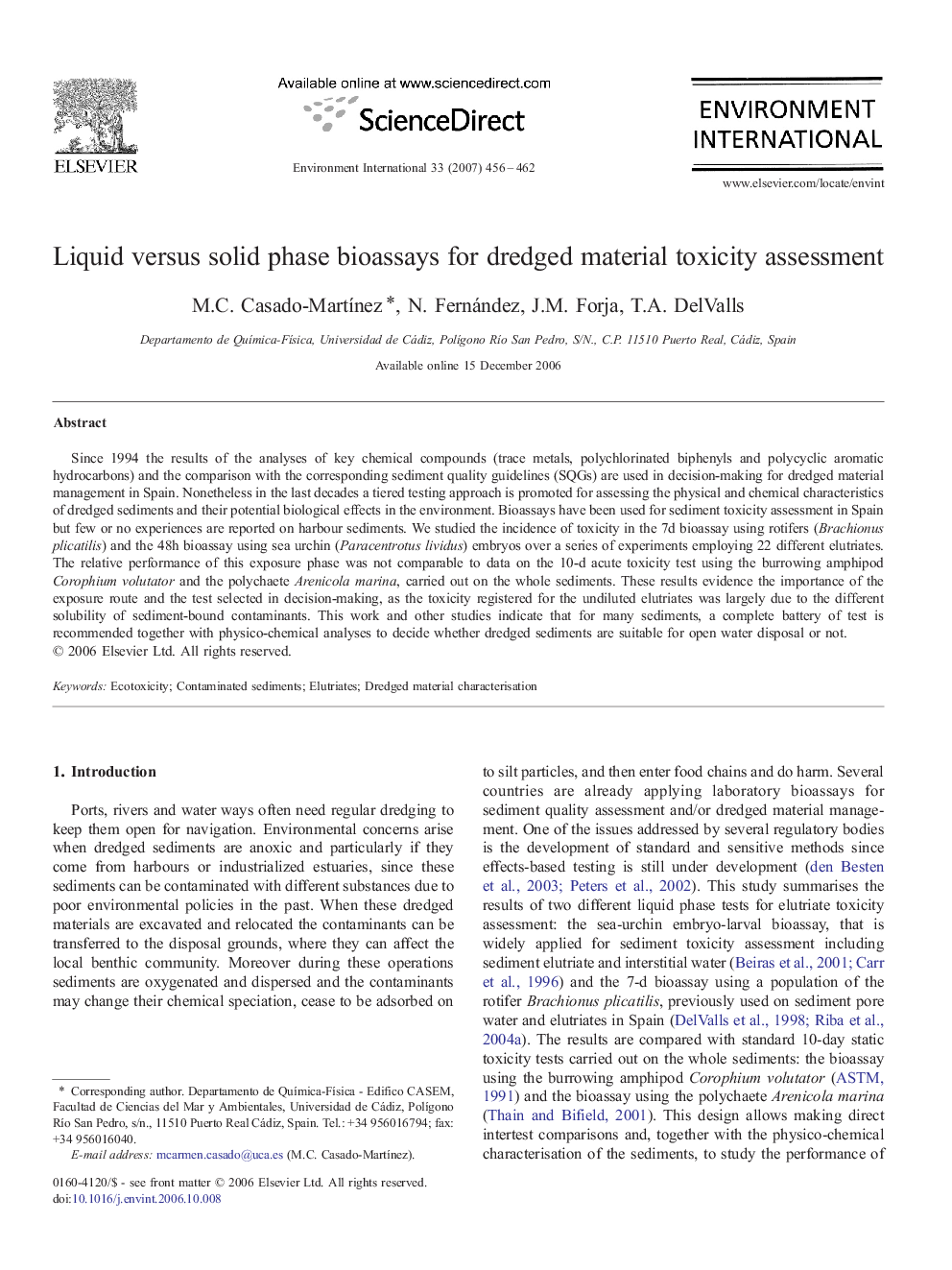| Article ID | Journal | Published Year | Pages | File Type |
|---|---|---|---|---|
| 4423963 | Environment International | 2007 | 7 Pages |
Since 1994 the results of the analyses of key chemical compounds (trace metals, polychlorinated biphenyls and polycyclic aromatic hydrocarbons) and the comparison with the corresponding sediment quality guidelines (SQGs) are used in decision-making for dredged material management in Spain. Nonetheless in the last decades a tiered testing approach is promoted for assessing the physical and chemical characteristics of dredged sediments and their potential biological effects in the environment. Bioassays have been used for sediment toxicity assessment in Spain but few or no experiences are reported on harbour sediments. We studied the incidence of toxicity in the 7d bioassay using rotifers (Brachionus plicatilis) and the 48h bioassay using sea urchin (Paracentrotus lividus) embryos over a series of experiments employing 22 different elutriates. The relative performance of this exposure phase was not comparable to data on the 10-d acute toxicity test using the burrowing amphipod Corophium volutator and the polychaete Arenicola marina, carried out on the whole sediments. These results evidence the importance of the exposure route and the test selected in decision-making, as the toxicity registered for the undiluted elutriates was largely due to the different solubility of sediment-bound contaminants. This work and other studies indicate that for many sediments, a complete battery of test is recommended together with physico-chemical analyses to decide whether dredged sediments are suitable for open water disposal or not.
